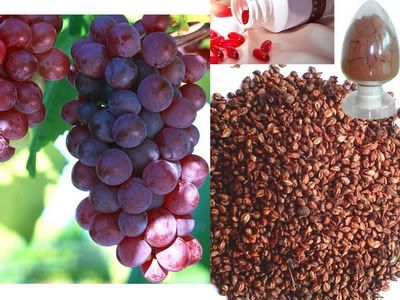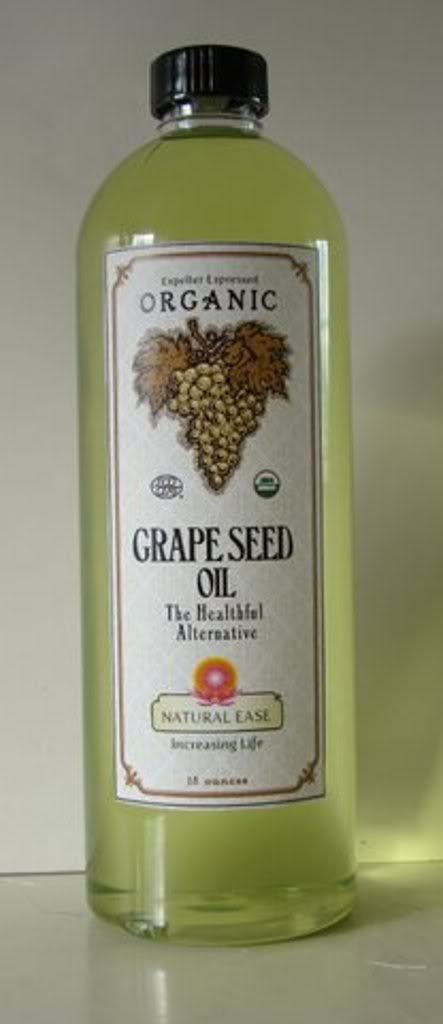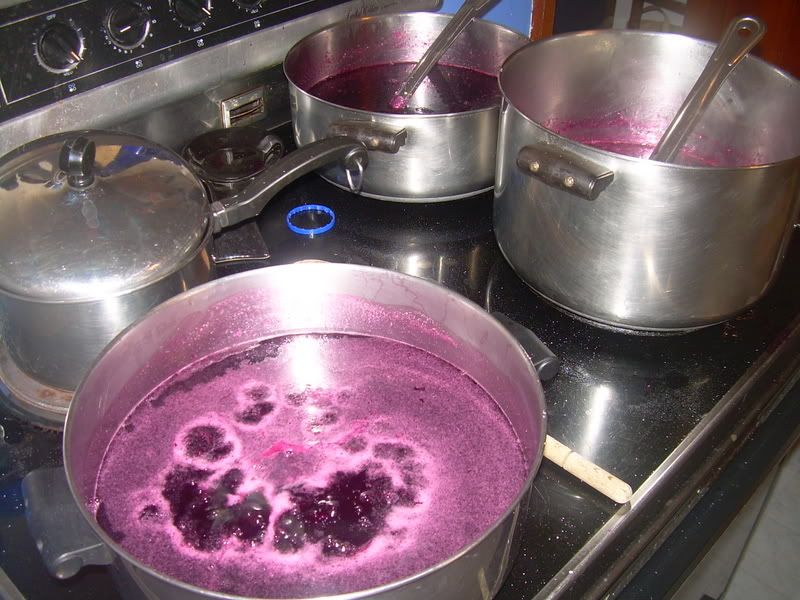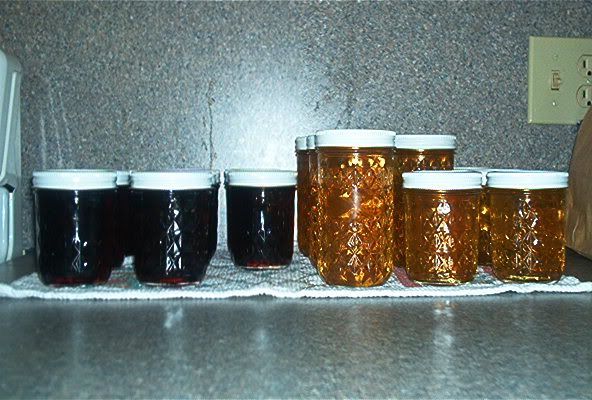
VINE
Vitis vinifera
Vitaceae
© Kat Morgenstern, September 2002
Synonyms:
Grapes, Grapevine, Vigne, Weintrauben, Rebstock
Description:
Cultivated vines are grown in vineyards, preferably a south facing hill with poor, stony soil as vine likes a well draining location - the poorer the soil, the better it seems to thrive, though it is rather picky about its climatic requirements. Vine dislikes cold and damp weather, and will die in temperatures below 18°C,. It is not terribly keen on humidity either and doesn't appreciate too much rain. It is perfectly suited to a dry Mediterranean climate.
Left untended vines grow up to 15 meters high, though they are a scrambling lot that cling to anything that will give them support. In cultivation they are usually kept low. The shoots are being pruned back every year. Sometimes the vines are trained on wires. The stems are very gnarly and twisty with a somewhat flaky brown bark and densely grained wood. The leaves are palmate, sometimes deeply indented or with very jaggy serrated margins, depending on the species. The flowers appear in May/June. They form bunches of tiny white 5 petaled inflorescences that exude a very delicate, sweet aroma. They do not last long however and soon the drupes of juicy berries start developing. Their size and colour depends on the species, but tends to vary from yellowish green to reddish, deep purple black. The berries are smooth skinned and each usually contains 2 seeds (except seedless varieties). Vines can be propagated by seed or cutting. Most European stocks are grafted onto American rootstocks due to the consequences of a devastating blight that once nearly devastated all European vines.

There are also many wild grape species, which tend to be a rather meandering lot. They can grow and sprawl over an extensive area when they are left undisturbed. The berries grow in the familiar bunch configuration, though they are much sparser and boast much smaller berries, which are usually quite sour. Like their cultivated counterparts, the flowers are small and rather inconspicuous.
ECOLOGY
The geographical origins of vines are still a matter of debate. There are numerous wild varieties that are at home in many different parts of the world. In fact, when the Vikings first happened upon that continent across the sea, now known as America, they called it 'Vinland' in reference to the many wild vines they found there. The cultivated European variety seems to have originated in Mesopotamia from where it steadily spread west and north, especially under the influence of Greek and Roman imperialism, which dominated the region for hundreds of years. Today it is grown in all warm, temperate regions of the world with good success and can be found in Central and Southern Europe, Northern Africa, Asia Minor, Greece, Asia, California, Chile, Argentina, South Africa, Australia, New Zealand.
Vine cultivation is so widespread in some areas that it occupies 1000s of acres at the expense of almost all other crops.

While wine lovers may appreciate the variety of tastes and textures to tickle their tongues, environmentally it is dangerous to put all ones eggs in one basket and deplete the soil's nutrients by growing the same crop year after year in the same fields. Many commercial vineyards are subject to heavy spraying and fertilization, which only further depletes the soil. An agricultural practice that depends so heavily on chemicals is not sustainable in the long run.
Vine does have a number of natural enemies: e.g. mildew attacks anything green, powdery mildew rots the stalks, shrivels the leaves, splits the grapes and finally kills the vine, red spider mite sucks the sap from the leaf veins, phylloxera vastatrix, the blight that was responsible for destroying crops across Europe in 18th century, attacks the roots, while the cochylis moth grub attacks the flowers.
HISTORY, MYTHOLOGY AND FOLKLORE
wine
The history of grape cultivation seems to be quite ancient, though its precise origin is impossible to trace. The Bible mentions that Noah had planted a vineyard, and he was probably not the first to do so. It seems that people knew and loved their vines as far as at least 6000 years ago. Classical texts abound with praise for vine and are full of suggestions on how to grow them and transform their juice into their beloved elixir of life. The ancient Greeks were the first to popularize the sacred liquid and the Romans soon followed in their steps, spreading vine cultivation all around the Mediterranean basin. By 600 BC cultivated vine arrived in what is now known as France where it was enthusiastically received. Though at first rivaled by Italy, France soon became the most significant region of vine cultivation in the world. However, tragedy struck in the latter half of the 18th century, when an American grower sent some specimen of his stocks back to the old world for study. The specimen turned out to be infested with a devastating blight that caused havoc in the vineyards, threatening to wipe out practically all of the European vine stocks. It was a catastrophe for the vine growers and merchants, not to mention the deprived general public. The cure eventually came from the same place as the blight, when a resistant species was found in the US. Europeans started to graft their stocks onto American rootstocks and thus succeeded avert total devastation. It took some time but eventually the industry recovered and European wine producers are again at the top of the charts.
Historical records suggest that the original wines of the Greeks were quite a different kind of brew than what wine connoisseurs appreciate today. Much thicker and heavier in texture it had to be diluted for consumption at a ratio of 1:3. There is also much evidence to suggest that wines were originally mixed with other substances, such as resins, aromatic herbs and certain psychotropic plants to create quite a different class of powerful intoxicants. In Greece, wine was associated with Dionysus, a wild, shamanic God of ecstasy, whose totem animal was a panther and his emblem a phallic pine-cone tipped wand, as a symbol of fertility and immortality. His rites were wild and orgiastic, culminating in the ritual death of the deity (or a representative) as the frenzied mob of Maenads, (his priestesses), chased him down and tore him apart. Later the sacrifice was substituted with that of an animal (a fawn or fox) until eventually Dionysus became tamed as a deity of grain and wine. The sacrifice was substituted with ritual bread and wine as the sacred substance used to commune with the deity, which is how he was celebrated at the Eleusian mysteries.

The Romans knew this God as Bacchus, a God of wine and intoxication who was worshipped in much the same manner. In Egypt, vine was regarded as a tree of life. Isis was said to have become pregnant after eating some grapes, and subsequently gave birth to Horus. Thus, her brother and consort Osiris became Lord of Wine.
Lucian, in his 'True History' tells a fabulous, though somewhat moralistic tale about a strange vineyard that used to grow on the far banks of a river that ran wine instead of water. The vines had solid trunks, but their upper parts gave rise to beautiful and perfectly formed maidens. Their hair was a tangle of leaves and grapes sprouted from their fingertips, yet if anyone were to pick them the girls shrieked with pain. They sang and lured passers by with kisses, but those who succumbed to their embraces found themselves instantly drunk, and unable to escape they instead took root and grew shoots and vine leaves.
Aphrodisiac associations:

Vine is truly a gift of the gods. In moderate doses it has the power to raise the spirit to states of exhilaration and inspiration, to unlock the tight controls of the mind over the spirit and emotions and open the heart and soul. Countless works of arts have been inspired by it, and countless adventures started from a spark of its enthusiastic fire. Those who abuse its power by indulging in greater quantities than serves them well, will be stupefied and suffer delusion. The ecstasy can turn to frenzy, yet the imbibed person is totally oblivious to his actions. In appropriate quantities however, wine is wholly beneficial to health and spirit and has often been praised for its civilizing effects.
MEDICINAL USES
Several parts of the grapevine can be used medicinally. Both red and white wine was formerly much employed as a medium for other medicines for tonic wines and cordials.
PARTS USED:
Leaves

Dried or fresh flowers,Berries,Fresh or dried fruit
Seeds

An oil is expressed from the seeds
HARVEST TIMES:
The flowers appear in May/June. The leaves should be picked in spring when they are tender, the bunches of grapes ripen from September onwards.
LEAVES:
Constituents:
Picked in the summer, the leaves contain a mixture of cane sugar and glucose, tartaric acid, potassium bi-tartrate, quercetine, quercitrin, tannin, amidon, malic acid, gum, inosite, an uncrystallizable fermentable sugar and oxalate of calcium; gathered in the autumn they contain much more quercetine and less trace of quercitrin.
Actions:
anti-inflammatory, astringent, stops bleeding
Indications:
An infusion of 1 tsp of fresh finely cut leaves per cup of water is taken for rheumatism, gout, nausea and spitting of blood. In Homeopathy a preparation known as 'Papinorum Extract is made from the leaves and vines. It is used to treat inflammation of the hip joints and for cases of epilepsy. Dried powdered leaves were given to cattle to treat dysentery. A decoction is said to be useful to avert threatened abortion. The astringent property helps to arrest internal and external bleeding, cholera, dropsy, diarrhea and nausea. The decoction can also be used to treat mouth ulcers and as douche for treating vaginal discharge. Red grape leaves are said to be helpful in the treatment of varicose veins, and fragile capillaries. For this purpose leaves are harvested as soon as they turn red and are used either fresh or dried.
FLOWERS
Actions:
nerve tonic
Indications:
An infusion of 1tsp of dried flowers to a cup of boiling water is made to strengthen the nerve dendrons and to support the action of the bone marrow of the spine. As such it can be used internally as a tea or externally as a rub to aid neuralgic function (even recommended for paralysis of the lower limbs)
BERRIES

Constituents:
malic, tartaric, ascetic ascorbic and racemic acids, alanine, alpha linolenic acid, alpha tocopherol, arginine. Oxalic acid in unripe fruits, Ca, P, Fe, thiamine, riboflavin, niacin, and ascorbic
Actions:
fortifying blood tonic, nourishing, stimulates kidney and liver function and thus aids elimination and cleansing, gentle laxative
Indications:
A popular method of cleansing the body of accumulated toxins is to do a grape fast, an old household remedy to cleanse and gently tonify the body. 2kg of grapes should be eaten during the course of the day, every day for two weeks with little or no other food. (Best to fast one day before embarking on this cure), this is very good for slimmers as it will release water from the tissues, reduce fat, regulate bowel function by stimulating and tonifying the kidneys, purify the blood and cleanse the skin, reduce rheumatic pains, heart burn and stomach burn. It is especially good for people with disturbed metabolism, water retention, dropsy and circulatory complaints. Grapes are a restorative, nourishing food good for anemia and debilitating conditions. The dried grapes are demulcent, nutritive and slightly laxative.
Contra-indications: not recommended for dyspeptics or for excitable, hot-blooded individuals as it may cause palpitations.
Grape sugar is very easily absorbed and thus acts as a speedy restorative in cases of exhaustion and debility as it does not interact with saliva before entering the bloodstream. Acts very immediately.
SAP:
A lotion was made with the sap (tear/lacryma) to treat weak eyes and specs on the cornea. It has also been used as a skin lotion. Internally it is diuretic.
GENERAL USES
Basketry:
The vine twigs are very bendy and have been used to make brooms and baskets
Cosmetics:
A lotion made from the flowers is said to be useful for freckles, the oil is used in soap making
Dyes:
A purplish dye can be obtained from the berries, though it does not last. The fresh or dried leaves yield a yellow dye.
Fuel:
The old wine stocks make useful firewood that impart a special aromatic note to foods grilled or cooked on it, the young twigs make good fire lighters.
Grapeseed Oil:

An oil is obtained from the pressed seeds which can be used for culinary and cosmetic purposes. It is slightly sticky, thus not very good if used on its own for massage oil. For internal use the oil must be refined before consumption.
Culinary uses:
Grapes are a wonderful refreshing, nourishing and cleansing fruit that can be enjoyed straight from the vine.
They yield a sweet and tasty juice, which not only makes a refreshing drink but can also be made into jelly, or reduced to a juice concentrate which makes a good sweetener. Most commonly grape juice is used to make wine. The business is enormous and the variation on the theme takes on staggering dimensions, the diversity of flavors and textures is nothing short of phenomenal.
Commonly wines come as reds, rose or white wines, champagne or sparkling wine, each of which can be made from hundreds of different grape species. A special sweet wine is produced by stopping the fermentation process prematurely by adding alcohol to the brew. The grape residues are also utilized: they can be distilled to make a strong 'Weingeist' or 'Eau de Vie'.
There are at least 8000 cultivated varieties of grapes, most of which are grown in the northern hemisphere.
The young tendrils can be eaten raw or cooked as a vegetable. The flowers are also edible and can be prepared as fritters.
The sap has a sweet taste and can be used as a drink, though harvesting large quantities weakens the vines. The seeds can be roasted and used as a coffee substitute. The leaves have long been used to wrap foods in to make a finger-food or appetizer, especially popular in greek cooking.
A crystalline salt, Cream of tartar, also known as potassium bitartrate, is derived from the residue of pressed grapes and the sediment of wine barrels is used in making baking powder.
recipes (1K)
Recipes for grapes, wine and vine leaves could easily fill a whole book of their own. Here just a few little suggestions:
Meat in wine and raisin sauce
Certain meats, especially game are particularly tasty when marinated in red wine. A very hearty and flavorful stews can be made by cooking the meat directly in the marinade. This is especially suitable for heavy meats such as wild boar:
Cut the meat in chunks, roll in flour and quickly pan fry it to seal. Put the meat into a big, deep dish and pour sufficient quantities of red wine over it to cover it. Add Pimento berries, Juniper berries, Bay leaves, lots of garlic and sprigs of Rosemary and Thyme. To give the sauce a fuity note you can soak raisins in it too. Marinate the meat for several days.
Just before cooking add large chunks of onions and carrots and simmer the whole lot for several hours. Serve with potatoes and red cabbage made with apples and raisins.
Stuffed Vine Leaves
1 x 8oz pack vine leaves
4oz long grain rice
2tbsp olive oil
1 bunch spring onions, finely chopped
1tsp fennel, chopped
1tsp fresh mint, finely chopped
salt and pepper
# Drain the vine leaves and boil for 5 minutes in unsalted water, rinse in cold water.
# Cook the rice until tender.
# Sauté onions and fennel in olive oil for 3-4 minutes, stirring occasionally.
# Add the rice and mint and season with salt and pepper. When the mixture has cooled down use l tsp to fill each vine leaf.
# Roll up tightly, turn in the ends to make a parcel.
# Place in pan and cover with water. Put a plate on top of the rolls to prevent them from unraveling while cooking.
# Simmer for 1 hour. Can be served either hot or cold with yoghurt or Raita.
Making Wine:
No two people make wine exactly the same way. Everybody has their own personal tricks and recipes and only practice will prove what works best for you. The guidelines below are very general, just to give an idea of the process.

Place the fruit into a bucket. Mash thoroughly and cover with boiled, but cooled down water. Cover the bucket and leave for 24 hours. Boil three more pints of water and dissolve some sugar in it (how much depends on the natural sweetness of the fruit and how dry you want your wine). Allow to cool down and add to the bucket. At this stage one might also want to add other herbs or spices, or some organic orange or lemon, peel along with its juice. Add one teaspoon of yeast and one teaspoon of yeast nutrient. Cover bucket once again and leave for a further 6 days, stirring once a day. On the 7th day check to see if a foam is forming on top of the mix. This is the sign that fermentation has begun. If no foam has formed, leave for another day and check again.
Strain the liquid and fill into a demi-john (glass fermentaion jar) using a muslin cloth and funnel. Seal with the bubble bung, half filled with water and leave in a warm place, but protected from direct sunlight. The fermentation process will take several months. During the fermentation process a gas is formed, which needs to be allowed to escape without allowing more oxygen to enter the jar. That is the role of the water-filled bubble bung. After 3 months the fermentation process will slow down. Eventually no more bubbles will rise to the surface. At this point you must taste the wine to see if it is too dry.
If so, add more dissolved sugar and continue the fermentation process. Once the fermentation process has stopped completely and the wine has the right sweetness you can bottle and cork the wine. Store the bottles in a cool place, (about 12 degrees celsius) preferably on their sides. Allow to settle for a few weeks.
Wine Making Resource
Grape/Jalapeno Jelly

Jelly made with yellow grapes and vinegar makes a good medium for home-made jalapeno jelly. Express and filter the grapejuice, add some vinegar and preserving sugar and minced jalapenos. Simmer until the mixture thickens. Add pectin if it doesn't. Fill into sterilized jars and allow to set. The jelly can be seasoned to taste, e.g. with ginger or garlic or star anise.

I've never really liked grapes, wine, or grape jelly...it doesn't agree with my body chemistry too well. I did copy the stuffed vine leaf recipe tho as that looks good!
ReplyDeletePilamaya Sister Soul! :)
Thanks for your great information, the contents are quiet interesting.I will be waiting for your next post.
ReplyDeletejobs in life Sciences
Thai Hung Company is committed to providing consumers and consumers with quality, safety and health products for consumers:
ReplyDeletecách dùng trà giảo cổ lam
mua trà giảo cổ lam ở hà nội
trà cà gai leo có tác dụng gì
Please come with us.